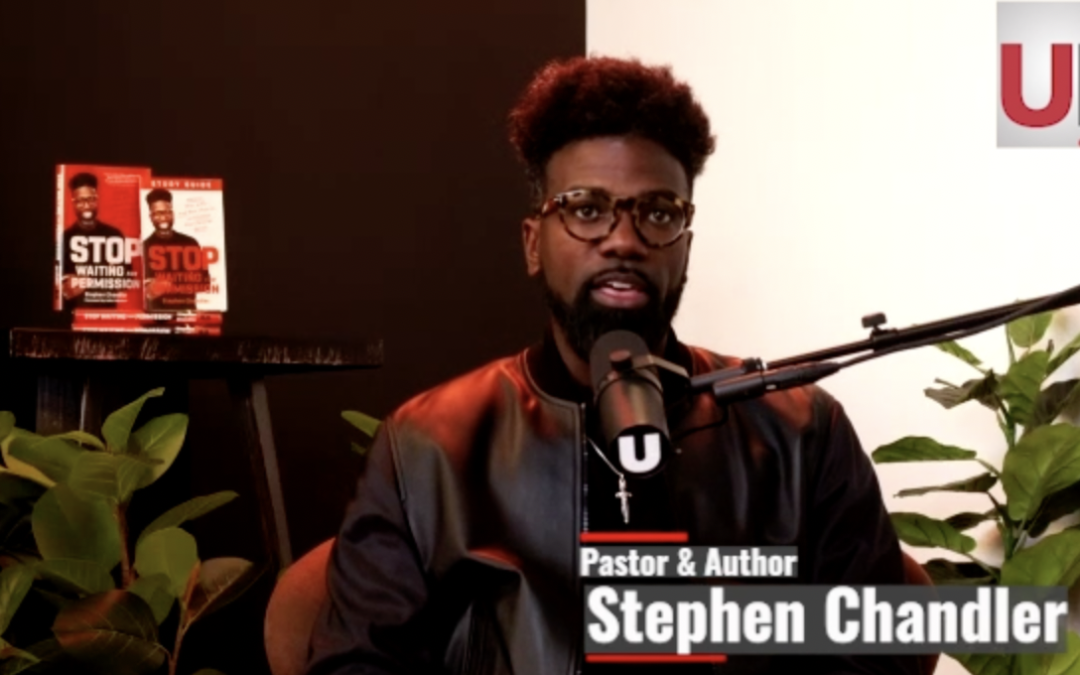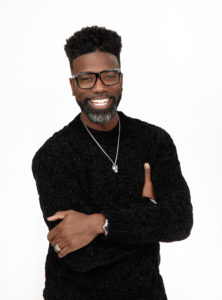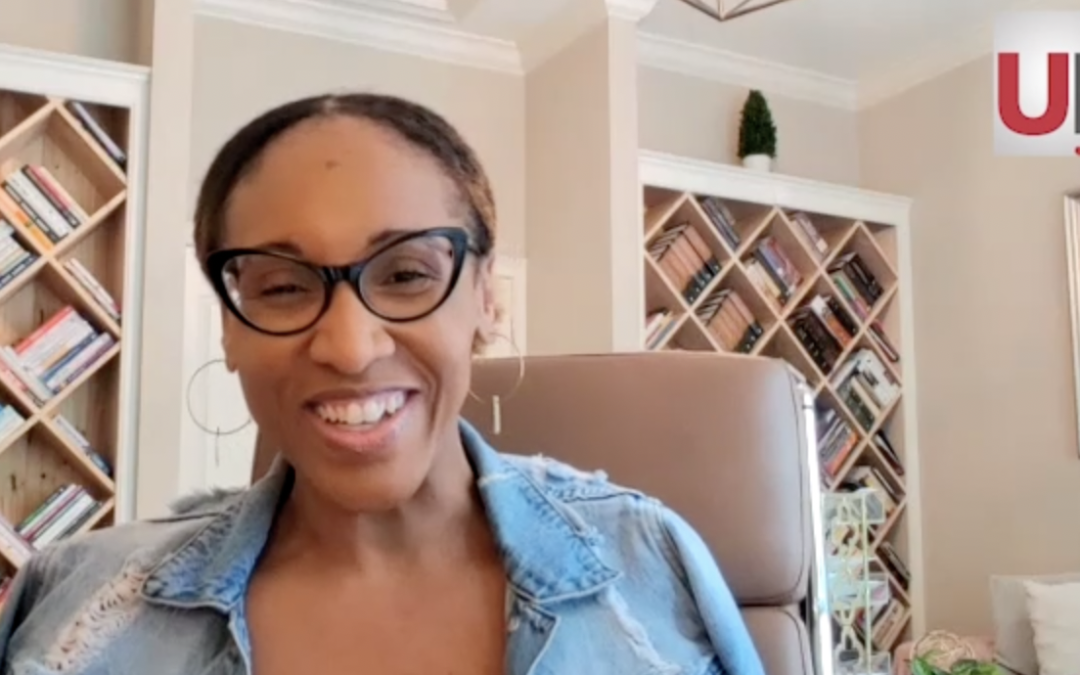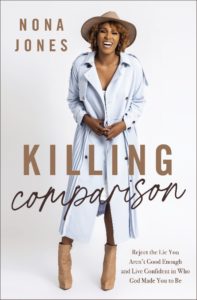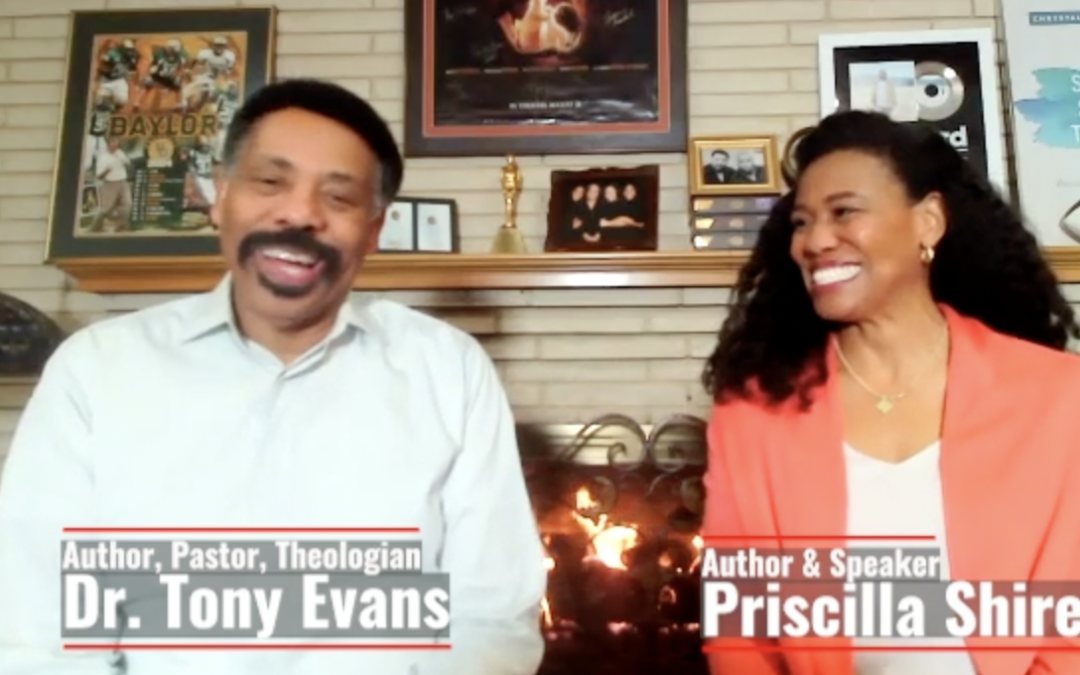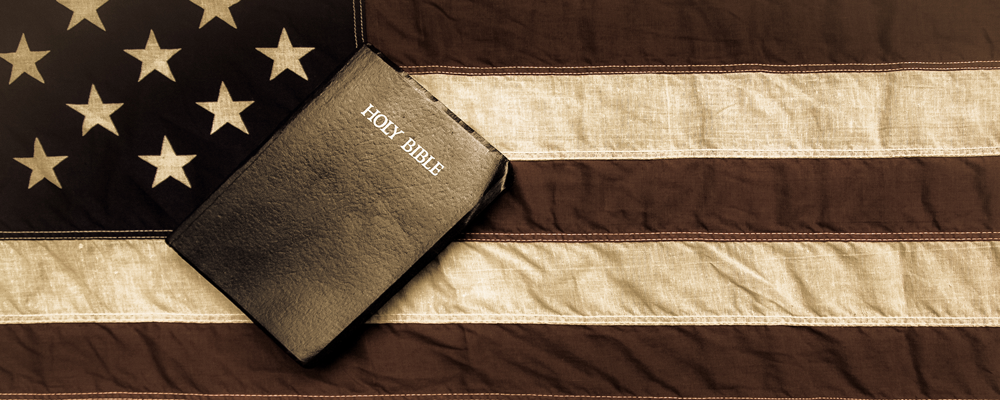
by Edward Ford Jr. | Oct 18, 2022 | Commentary, Headline News, Social Justice |

As a Christian, you may ask yourself at times how to live out your faith in the public sphere. Injustices are occurring in the world around us every day. Because your faith doesn’t allow you to ignore these happenings, you feel a strong desire from within to take productive action. Some people choose to take harmful action but your desire is to take action that heals, that works towards justice and that shows God’s love for humanity. This is what we should aim to do, and my goal is to help you begin to think of ways you can live out your faith while having a positive impact on the world around you.
We are called to live out our faith and have an impact on society. A verse in the scriptures that reiterates this calling is Micah 6:8, which says “He has told you, O man, what is good; and what does the Lord require of you but to do justice, and to love kindness, and to walk humbly with your God?” In this verse Micah points out what God requires of us. We are to do Justice. How are we “to do Justice”? What does that mean for us? Justice comes in different forms. We can do Justice by lending help to the parent who is struggling to put food on the table and is earning just enough to put a roof over their children’s heads. We can lend our help by offering to buy them groceries, maybe filling up their car with gas or connecting them to resources that can give them financial assistance and build their credit. We can do justice by assisting the homeless in our community to find shelter and get them connected to resources that will supply them with food and daily necessities. We can do justice by giving our time, talent and treasure to community organizations that give back to youth, those who are less fortunate and those who are struggling to make it each day.

These are some ways we can do justice on an individual basis. To those who already do such acts regularly, I commend you. Continue this good work. However, there’s also a need for justice on a systemic level within our society. As Christians, we are to follow the example of Christ, and stand beside those who are looked down on and mistreated by society. We have the capability to do justice on a systemic level by advocating for changes within our systems. We should advocate for opportunities for disadvantaged youth. Whether that be through mentorship programs, academic tutoring, pouring more resources into historically underfunded schools and giving families more choices as to where their child can attend. We should advocate for those who are battling unfair sentences in the justice system and creating opportunities for those who have paid their debt to society, in an effort to reduce recidivism rates. We should aim to provide more accessible opportunities for employment, educational opportunities, and programs for financial and civic literacy once they are released. More people should focus on advocating for those struggling with mental health issues and substance abuse. These are initiatives that would exhibit justice as Micah 6:8 led us to do.
Our participation in advocating for policy and systemic change in the public sphere is crucial. Many people believe their voice doesn’t matter, and as a result they don’t bother to vote or advocate for change. I can understand why many feel this way. However, inaction by good hearted people doesn’t get us further towards justice at all. Our government is supposed to be by and for the people. That means we the people of the United States have a voice and can move our government through civic engagement to reform laws and systems to deliver true justice. We can have a great impact especially on a local level. For example, after the terrible deaths of George Floyd and Breonna Taylor many cities across the country were pressed by citizens to take action against not only police brutality but racial injustice on a broad systemic level. That means in education, voting, criminal justice, and especially public health as the COVID-19 pandemic exposed the inequities in our health care system. With much to be addressed U.S. cities and state governments passed their own policies in an attempt to tackle racial injustice. In my home City of Middletown, CT where I am a member of the City Council, we decided to establish a Task Force on Anti-Racism. This Task Force was given the charge to find policy solutions to systemic racism wherever it exists under our jurisdiction. My colleagues and I received numerous emails from residents calling for change. The establishment of the Task Force was a response to residents’ call to action and would be the beginning of furthering justice within our own community. This is one example of how people can make a difference and move our government from stagnation and lip service to action and moving in the right direction. I encourage you to believe that your voice matters. Someone is waiting for you to stand up for the cause of justice.
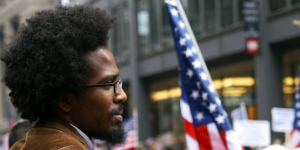
With myriad issues that need to be addressed it’s easy to feel overwhelmed. You don’t have to figure out how you will be an advocate for all of them. I encourage you to look at the example of Christ. He advocated for those who were hungry, sick, outcasts and shamed. He even advocated for you before you were born so that you may have life more abundantly. If you use your time and energy each day advocating for justice, you are advocating for those who are facing current circumstances as well as generations to come. Remember, to do justice is to take action that creates a society where everyone has the opportunities, tools and resources to fulfill their God-given potential. Justice can be restorative instead of further tearing individuals down.
I focused in the previous passages on how we “do justice.” However, those actions are to love kindness and walk humbly as well. When we reach out our hand to help and advocate for others who society would rather turn their backs on, we extend kindness. When we set aside our pride and consider the circumstances of others instead of solely focusing on our own, we begin to walk humbly. I challenge you to think about what issues in your community you can begin to advocate for that would further the cause of justice. What Town Hall meetings can you attend to advocate for justice? What issues can you write your Legislator or Mayor about? If you don’t know who these individuals are, I encourage you to research them. As you begin to walk in the requirements of Micah 6:8, you will be living out your faith in the public sphere.

by Emily McFarlan Miller, RNS | Oct 11, 2022 | Commentary, Headline News |
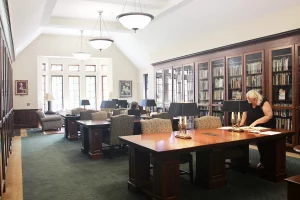
Wheaton College has an open library commemorating Tolkien and the “Lord of the Rings” universe, formally known as the Marion E. Wade Center, at the college in Wheaton, Illinois. RNS Photo by Emily Miller
WHEATON, Illinois (RNS) — It started with an inkling.
It was the 1950s. Clyde S. Kilby, then an English professor at Wheaton College, had a feeling about a British author he’d been reading named C.S. Lewis — that he was “probably going to be famous one day,” according to Crystal Downing, co-director of Wheaton’s Marion E. Wade Center.
So Kilby wrote to Lewis and started collecting books and letters written by the author. He met some of Lewis’ friends and family.
Years later, he was traveling to England to work with Lewis’ Oxford University colleague J.R.R. Tolkien on “The Silmarillion,” a collection of stories that fill in the background of Tolkien’s beloved “Lord of the Rings” trilogy.
Decades later, the professor’s collection of letters and books has grown to become the Marion E. Wade Center, one of the foremost research centers not only on Lewis, but also Tolkien and five other British Christian authors who had influenced Lewis’ work.
Now the Wade Center is preparing for an influx of archival materials and interest as Tolkien and his fantasy world of Middle-earth have once again grabbed the spotlight.
RELATED: Tolkien fans hope to turn his house into a ‘Rivendell’ for writers and filmmakers
After years of speculation, the first two episodes of “The Rings of Power” — the multimillion dollar prequel series produced by Amazon Studios and inspired by the appendices to Tolkien’s “Lord of the Rings” novels, debuted Thursday night (Sept. 1) on Prime Video, Amazon’s streaming service.
“Tolkien probably would never have gotten published if it weren’t for Lewis,’” Downing said.
“And, of course, Lewis wouldn’t be famous if it weren’t for Tolkien because Tolkien is the one who convinced him he could be a Christian.”
The Wade Center can feel like the evangelical Christian college’s best-kept secret, housed in a cozy building that looks like a stone English cottage nestled into Wheaton’s suburban Chicago campus.
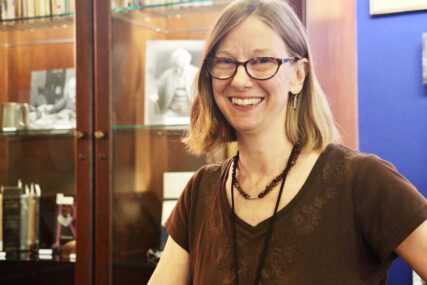
Laura Schmidt, archivist and Tolkien specialist at the Marion E. Wade Center at Wheaton College. RNS Photo by Emily Miller
But Laura Schmidt, archivist and Tolkien specialist at the center, said, “Tolkien knew about Wheaton College. He knew about the Wade Center.”
Pre-pandemic, the Wade Center welcomed about 10,000 people a year, ranging from elementary students from Chicago-area school districts to scholars from around the world.
Its archive includes books belonging to authors Lewis, Tolkien, Dorothy Sayers, George MacDonald, G.K. Chesterton, Owen Barfield and Charles Williams (including more than 2,400 from Lewis’ personal library alone). It also includes original manuscripts of their work, letters they wrote and oral history recordings of people who knew them.
Among its treasures are rare, autographed first editions of Tolkien’s “Lord of the Rings” trilogy and “The Hobbit,” all featuring cover artwork designed by the author himself.
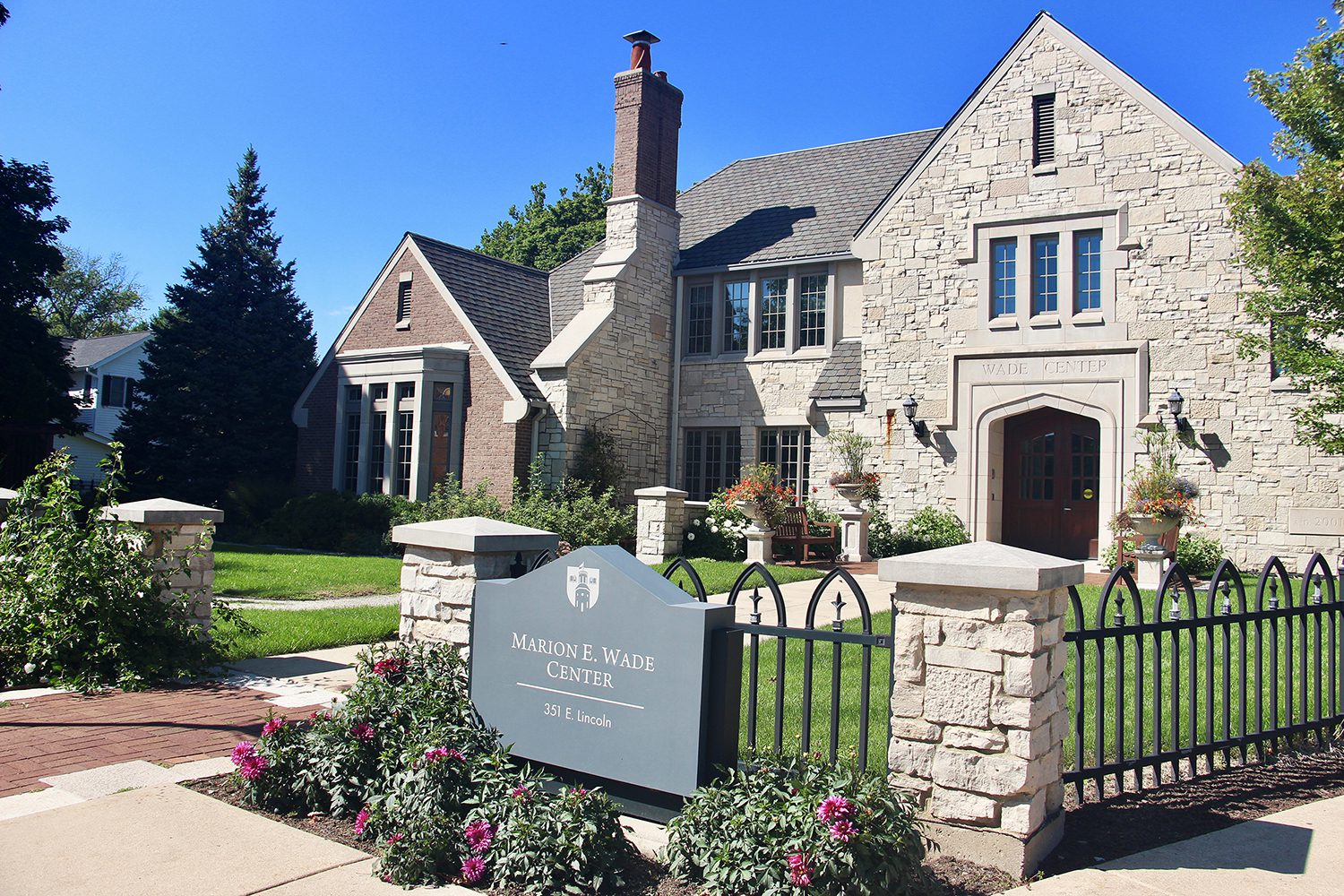
Marion E Wade Center, home to the Tolkien Library, is housed on the campus of Wheaton College in Illinois. RNS Photo by Emily Miller
An exhibit in the museum shows how those covers have changed over time, from Tolkien’s artful eye of Sauron circled by Elvish script to a 1980s paperback featuring an Olan Mills-style portrait of the dwarf Gimli and elf Legolas with flowing, romance-novel hair.
Another exhibit atop the dining room table from Lewis’ house displays merchandise that accompanied the popular “Lord of the Rings” films released in the early 2000’s and more recent films based on “The Hobbit.” There is a Lego scene of The Shire; a letter opener made to look like Bilbo Baggins’ Elven sword, Sting; even a board game.
The museum also features the small, nearly hobbit-sized desk at which Tolkien wrote “The Hobbit” and much of “Lord of the Rings,” as well as the dip pen he used to write, slightly melted on the end he used to tamp his pipe tobacco. Its most popular attraction, though, is the wardrobe carved by Lewis’ grandfather that inspired his beloved children’s story “The Lion, the Witch and the Wardrobe.”
Yes, there are fur coats inside.
On Tuesday, scholars from Ireland and Australia perused texts in the reading room, home to at least one copy of every book published by the seven Wade authors, as well as nearly everything ever published about them.
Meanwhile, across campus, members of the Wheaton College Tolkien Society shared their plans for watching “The Rings of Power” while manning a table at Wheaton’s club and ministry fair. The series had yet to premiere, and members were feeling both excited and apprehensive.
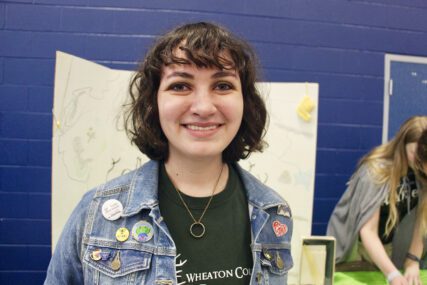
Elizabeth Church, president of the Wheaton College Tolkien Society, was one of several students helping to run a booth about the club at the school’s Club and Ministry Fair. RNS Photo by Emily McFarlan Miller
Tolkien Society President Elizabeth Church said that what drew her to Tolkien’s stories was the “found family aspect.” In the “Lord of the Rings” series, the Fellowship of the Ring brings together hobbits, elves, dwarves, humans and others for a single purpose: to destroy the one ring and defeat evil.
Church has found a similar family in Wheaton’s Tolkien Society, she said.
“We’re very much like the fellowship in the books in that we are a ragtag bunch of people who come together for one goal, which is to be a fellowship,” the senior said.
The first two episodes of “The Rings of Power” set up an epic battle between good and evil. In one of its opening scenes, a young Galadriel, who will become the elven Lady of Lórien in “Lord of the Rings,” questions how to recognize the light when evil masquerades as good.
The answer comes near the end of the episode: “Sometimes we cannot know until we have touched the darkness.”
Light and dark, good and evil are themes found throughout Tolkien’s work, Schmidt said before watching the new series.
And Schmidt, who advises the Tolkien Society, expects the series to get dark.

The Marion E. Wade Center at Wheaton College includes a wide variety of memorabilia including cards, miniature swords and other decorations symbolic of “The Hobbit” and “The Lord of the Rings” series. RNS Photo by Emily McFarlan Miller
It’s drawn from writings set before the events of “Lord of the Rings,” when the evil sorcerer Sauron is handing out what Schmidt jokingly called “friendship rings” to men, dwarves and elves that he’ll later use to control Middle-earth. It’s a long time before the conclusion of “The Return of the King,” the final book in Tolkien’s series, when good ultimately triumphs over evil.
Those themes are also part of the reason why the author’s work not only endures nearly 70 years after it first was published, but also has inspired what has been called the most expensive TV show ever made.
“I think that’s going to really resonate with people in this time and era now, because there’s a lot of darkness that we’re trying to figure out. That’s why these books are pertinent to our time, and it’s going to, hopefully, inspire hope in people’s hearts that the fight is worth fighting,” Schmidt said.
“Maybe we’ll get a ‘Return of the King’ in a few years.”

by Peggy Hatton | Oct 4, 2022 | Commentary, Headline News, Prayers & Devotionals |

In the journey of my life, yesterday a chapter ended. Thank goodness, I didn’t get stuck but moved past my circumstances, when I was diagnosed with my first brain tumor.
I say first because there was a third time around. And each time, it was a severe blow that overpowered me and almost put me under. I have a history of brain tumors (Meningioma). Therefore, I want to share what God has done in my life, God brought me through it all.
I was a single woman working in the medical field with no expectations of bad news. I started having severe headaches, and knew something wasn’t right. A MRI was ordered and my peaceful life was impacted significantly when the doctor called me at work and gave me the results. My physician asked: “is this Peggy Hatton?” I said yes. He said “your “MRI” results revealed a large brain tumor.” I said, “what?!” I cried, wanting to scream, but had to hold it in because I was at work.
And the first thing that came to my mind was, “I’m going to die.” I notified the supervisor of my situation and let them know that I had to leave. I wasn’t any good after hearing this. I had to call my cousin to pick me up because I couldn’t drive either. I was weeping non-stop. I cried unstoppably until my face was swollen. I knew God was the only one who could help me and I prayed and talked to him saying, “Why Me Lord?” I felt the Holy Spirit respond: “Peggy, why not you? Don’t be discouraged, I will always be with you.”
God comforted me and I moved forward and had the first brain tumor surgically removed. Although I woke up temporarily blind, the surgery was successful. I was still in ICU when an optometrist came and worked on my eyes. I was so scared. Later on that day, my vision returned.
After all of the procedures, my eyes have never been the same. Today, I use numerous eye drops and visit an optometrist regularly. I accepted what I had no control over.
Years later, I started having severe headaches again and knew the brain tumor had returned. Another MRI was taken and showed it had returned with a vengeance, it was brain cancer. I prayed and put it in God’s mighty hands.
I had radiation treatment for brain cancer. Today, I am still having more treatments and is scheduled to graduated soon. None of this was easy and if I didn’t have a mustard seed of faith in God, I wouldn’t have made it.
I interacted with cancer patients and we all need encouragement, inspiration, and love. This is whyI am sharing my story to uplift others in their battles.
This illness shattered my life, caused me to become disabled, and live less fortunately financially. However, God has truly blessed me and I thank him for placing supportive saints around me.
During all my trials and tribulations, real compassionate people reached out through texts, calls, and visits. I thank God for his mercy, grace, and his angels. act of kindness and thoughtfulness was greatly appreciated.
When going through battles, everyone needs somebody. It helps so much just knowing other people care and you are not going through this alone. There is always someone in circumstances worse than yours. No matter how tough this battle has been. I never lost my faith in God, therefore I never lost a battle. I kept my head up, wiped tears, and kept moving.
Through it all, as a wounded soldier, God gave me peace that passes all understanding.





